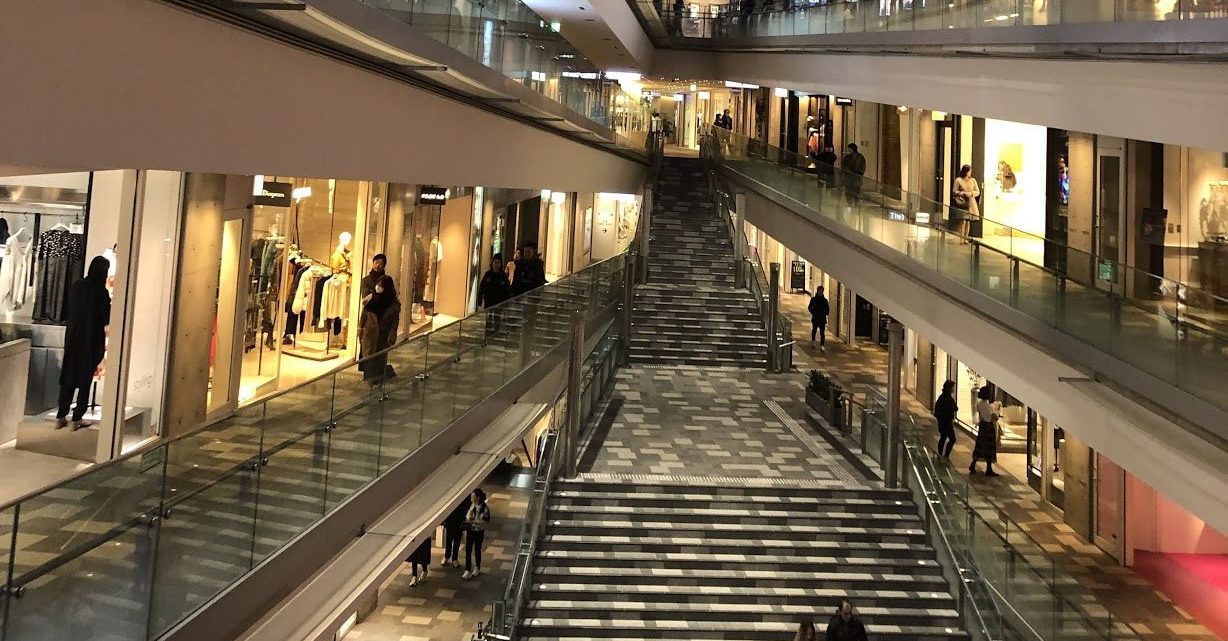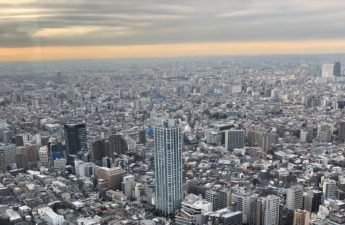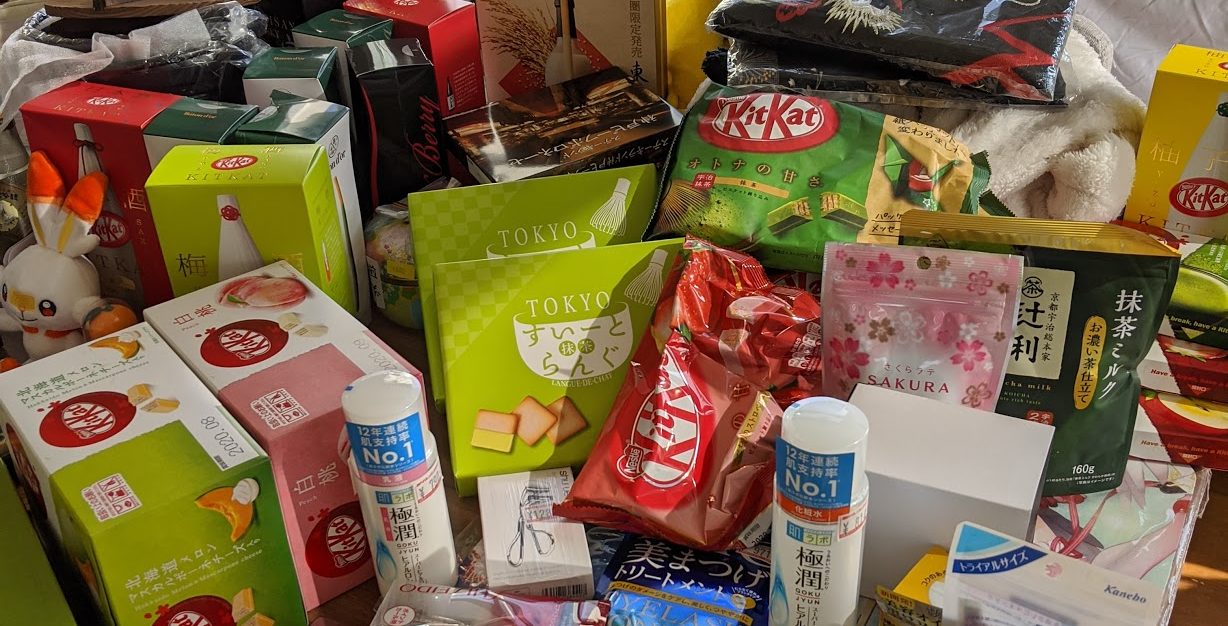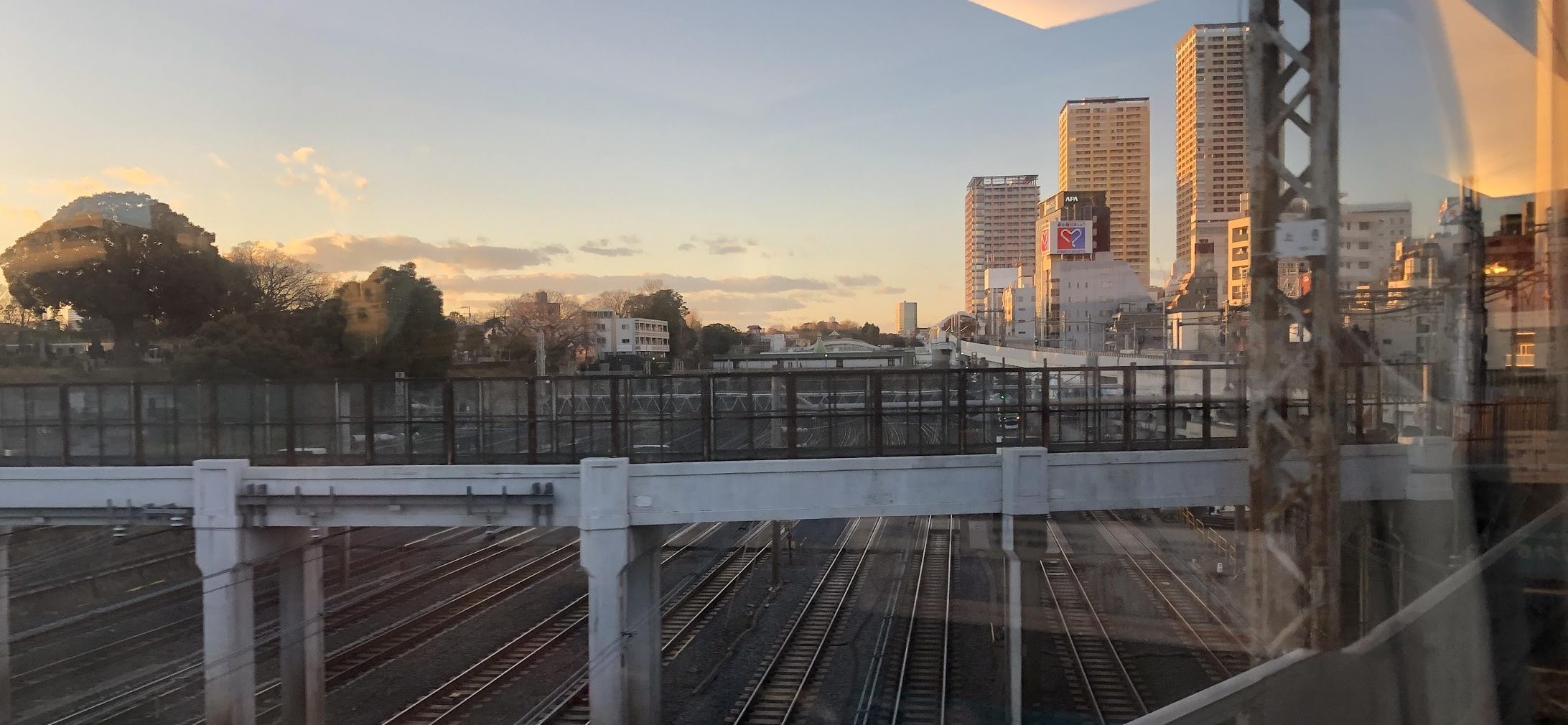Our last full day in Japan. We woke up early and wanted to check out the Imperial palace, and then go to Tsukiji market after that for lunch/breakfast. We walked from Roppongi to the imperial palace, which took a while, and for some reason the streets were almost completely empty, except for 2 joggers. I felt like I was in a ghost town or something.
The Imperial Palace is set in the middle of Tokyo, surrounded by a river. This part of the city is totally sky-scraper free and forms the center of the city. Unfortunately, when we got to the palace, officers along the path said that the imperial palace was closed for the holidays. The Japanese emperor actually still lives there, so it makes sense that he’d want to close the palace to visitors for the holidays.
We started walking toward the Tsukiji market, cutting straight through Ginza. Tsukiji market didn’t look like much from the outside, but after we got inside, it was like a dense maze of small narrow corridors with awnings overhanging the pathway. There were vendors on both sides and selling fresh fish, cooked crab, strawberry treats, fruit, dessert, and anything else you could think of buying or eating. There were also a lot of restaurants in some of the passageways between the shacks.
Tsukiji market now sells more to consumers than businesses, and I think the main fish auction aspect of the market actually moved a little closer to harbor, at Toyosu market. It was actually SO packed.
We quickly got in line for one of the many locations for Sushizanmai, and it was a quick wait to get us in through the door. We had a great time ordering sushi and eating the food. It was revolving sushi style, but the fish here was fresher than any other kaiten sushi place we’d been at.
After we paid and left, we took the train up to Akihabara. We went to Yodabashi Camera, which sells EVERYTHING. I think the biggest location is in Akihabara, and the theme song is super catchy as well. We bought a bunch of makeup, snacks, and two kimonos, all tax free. We were also in search of some anime-themed goods that we could give to some friends who were into that stuff. We shopped for hours at Radio Kaikan and other small stores, and we were coming up empty. We specifically wanted a fanny pack with an anime girl on it but we couldn’t find one.
Another shopping destination on our list was Kappabashi Dori, or kitchen street, in nearby Asakusa. We went all the way to the end of the street and saw the massive chef’s head and the cups that signaled the beginning of the street.
We bought two of the tabletop individual-sized hot pots that we used at the ryokan and the temple, and then I bought a teapot for my mother made of cast iron. It was one of those tetsubins. I really really wanted to buy a bunch of bowls and plates, especially ones made in the Arita region, which has a long history of beautiful ceramic making. But I knew that our shopping was already getting a little out of hand and these fragile items might not make it in our luggage.
On this street, you can find anything that you’d need to open a restaurant. There were stores dedicated to signs and menus, stores that carried a massive collection of only white dinnerware, stores that sold cooking utensils, pots, and trays, some stores that sold mostly melamine tableware, many, many stores that sold basic ceramics, and a few stores that sold their ceramics more as art pieces than as tableware. We even saw a whole store dedicated to selling resin and plastic display food.
Masa had to keep reminding me not to buy too much, since we already had 8 fragile Starbucks mugs in the luggage. At Kappabashi dori, most stores will tax you regardless of your passport. You’re supposed to go to a stand at the end of the street to get your tax refund. But on that day, it was closed, so the first store we went to did tax us, but the 2nd store went through the tax free process with my teapot and didn’t tax me.
At dusk, we took the train back to Akihabara to finish our search for anime stuff. After a bunch of stores, we went to yet another anime themed store and we found exactly what we were looking for. Then we walked to LAOX to pick up more goodies. I compared the cast iron teapots there and honestly, prices and styles were comparable to the cooking supplies street but whatever. We bought a ton of snacks. They closed at 8 and we were kicked out after we bought our $50 of non-taxed goods. My passport was getting thick at this point with all the receipts people were stapling in it. We were finally done with the shopping for the day and by this time it was already dark.
We went back to the hotel to put down our shopping, and had a drink of the sakura sake we bought earlier. It’s pretty gimmicky since the flowers are floating around in your drink, but it seems to be pretty popular in Japan.
Then we walked to Roppongi’s food area to get some food. The streets of Roppongi (not the main area with the clubs, bars, and stores) were much more deserted. Even the regular small streets had the most beautiful winter illuminations.
We were getting frustrated looking for dinner here as well because all the restaurants were closed. We finally went to a nice okonomiyaki place, and it was quite yummy.
Then we walked to Don Quijote in Roppongi. It was starting to get rainy, but we spent a few hundred dollars on sake, whiskey, kit kats, pocky, makeup, and random household items that we thought were cute.



